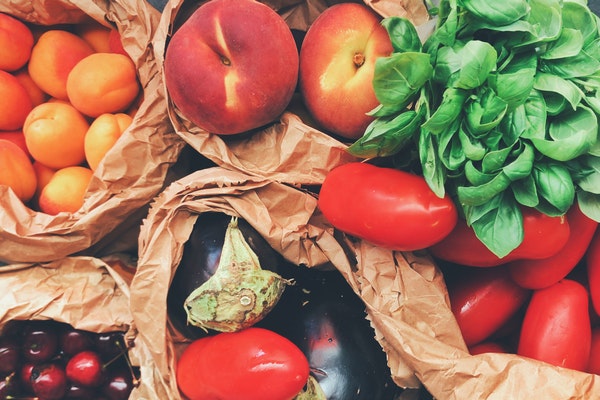Vegetables and fruits are an integral part of our daily life. Both are pretty effective on a well-balanced diet. Many health experts have urged people to use fruits and vegetables as much as possible because their benefits are immense.
If you eat fruits or vegetables, you will not be vulnerable to many diseases like heart disease, high blood pressure, stroke, and cancers. But anything has two sides to it.
We mentioned how effective both fruits and vegetables could prove to be for people. Meanwhile, if you don’t handle fruits and veggies properly, they can create health problems for you.
For example, if you somehow don’t store fruits and vegetables appropriately, they will become contaminated with salmonella, listeria, bacteria, etc.
The taste of both vegetables and fruits would disappear, and they will become dangerous for human health. It is why you should take care of the fruits and vegetables.
Storing vegetables and fruits is pretty straightforward and doesn’t require any special doing to get that in place.
Focusing on that topic, we have some advice for you that will give insight into storing vegetables and fruits.
Let’s begin it now.
1. COOL AND DRY PLACE
It would help if you kept tomatoes, potatoes, and bananas in a cool, dry place instead of storing them in the fridge.
It will be a wise idea if you store mushrooms in a cool and dry place. Â Moreover, Eggplant should also be kept cool, and you must use it within two days else they will not be helpful enough for you.
A lot of confusion about potatoes exists regarding whether you should store them in the fridge or not. But the accurate and researched base analysis suggests that you should keep them outside of the fridge but in a cool, dry area with plenty of ventilation.
2. IN THE FRIDGE
When you opt to store fruits and vegetables, you would always have considered the fridge your first priority in this regard.
However, a fridge is an appropriate way to store fruits and veggies, but you can’t store anything on it.
Let’s find out what type of vegetables and fruits you can keep in the fridge.
Storing apples in the fridge would always help to soften them. Most of the veggies and fruits are refrigerator friendly, and it is why you should store them in the refrigerator.
A crisper drawer in the refrigerator will not only protect your fruits and veggies but will make sure the moisture is remained intact, which will make a strong case for your product to remain fresh for a long time.
Another product that you might store in the refrigerator is Asparagus. It would be best to store it by wrapping it with a moist towel, or there is also a possibility of storing it in glass rapped with a paper towel.
Carrots are also the candidates for storing in a fridge, and you need to peel them before using them. To store fruits and vegetables in the refrigerator, you should use plastic bags with vents because these bags will make your produce fresh by releasing moisture.
You can use them for blueberries, cherries, strawberries, and grapes. Storing berries in the fridge and then washing them just before using them is a wise idea.
Moreover, it would help if you washed fresh heads of lettuce before refrigerating them. Â All you need to do is dry their leaves, put them in a clean and dry plastic bag with a paper towel, and store them.
Last but not least, you can van also store rhubarb in the fridge after wrapping it in plastic and then store it.
3. IN THE FREEZER
A freezer can be a befitting option to store fruits and vegetables. It is a convenient and fast way to store produce at its nutritional quality and peak maturity.
If you store your vegetables and fruits in a freezer, they will remain fresh for quite a long. The thing which you should look for is to provide a suitable environment for storing things in a freezer.
Put your freezer in a place where there is a possibility of air coming in. air makes the freezer more relaxed and more comfortable.
Meanwhile, few things are not recommended to store in the freezer. And the list of those fruits and vegetables are endive, artichokes, Belgian endive, Eggplant, potatoes, lettuce greens, sweet potatoes, sprouts, and radishes.
Here are some tips which might help you to understand things better.
- After peeling dark bananas, freeze them in a clean plastic bag. Later on, you can use these dark bananas either for delicious fruit smoothies or for baking.
- Freeze mangoes or papaya slices on a tray. After doing so, store them in a plastic bag for tasty snacks.
4. AT ROOM TEMPERATURE
Many people ask whether they can store fruits and vegetables at room temperature or not. It is not ideal for storing all the vegetables and fruits at room temperature, but some fruits and veggies are still suitable for keeping at room temperature.
Let’s explore this discussion.
Storing onions and garlic in a well-ventilated area at room temperature is a wise idea. Furthermore, you can also store tomatoes at room temperature. But keep in mind you must wash them before using them in daily life.
More produce that you can store at room temperature are mangoes, peaches, plums, and pears. Store them in a brown bag, and if you want to keep them for a long time, move them to a refrigerator after some time.
Pineapple is also that kind of fruit stored either in a room or in the refrigerator to spread sweetness. In addition, you can also preserve melons cantaloupe at room temperature.
5. Should you store produce separately or together?
It is indeed a trendy question that people often ask whether to store fruits and vegetables separately or together. You must store some veggies and vegetables separately irrespective of where they land.
But sometimes, it is acceptable to store some veggies and fruit together. The reason is an Ethylene natural gas that some fruits like to emit. As a result, it can catalyze the ripening process of both vegetables and fruits. For example, if you want to ripen avocado faster, store it beside a rope banana and let the ethylene do its magic.
Meanwhile, it would help if you did not always want to make your produce ripe fastly. If your product would ripen up quickly, then it ends up rotting. A wise idea would be to keep ethylene gas emissions away from other produce.
Avocados, stone fruits, bananas, pears, apples, and tomatoes are most susceptible to natural ethylene gas.
Also, make sure that you keep onions to themselves. They love to share their fragment with others, so it is why you should store them separately. Moreover, especially keep onion away from potatoes will sprout and wilt quickly due to onions.
6. How to store cut vegetables and fruits?
It is helpful to cut the fruits and vegetables before storing them in the fridge. Sliced vegetables and fruits will save space for other things. After fruits are sliced, they will last for five days or so.
On the other hand, the longevity of vegetables is slightly more significant than the fruits. You should follow some instructions before storing sliced produce in the fridge.
It will not help your cause when you cut fruits like pears, apples, avocado, and bananas before storing them, as they will turn brown pretty quickly.
Instead, you can store those fruits except bananas in your crisper drawer. The advantage that you carry with the crisper is that it will keep the moisture in check. This aspect will increase the longevity of vegetables and fruits.
7. List of fruits and vegetables that you can store at room temperature, fridge, and counter
After discussing the whole topic in detail, let’s make the list which will tell how to store fruits and vegetables and which kinds of fruits or vegetables suitable for a particular method. This list will help you find all the products stored either in a fridge or in the freezer.
Let’s begin it
 1. Vegetables and Fruits to preserve at room temperature
- Basil
- Bananas
- Eggplant
- Cucumber
- Grapefruit
- Garlic
- Lemons
- Green beans
- Onions
- Limes
- Potatoes
- Oranges
- Sweet potatoes
- Summer squash
- Watermelon
- Zucchini
- Winter squash
2. In the Fridge
- Asparagus
- Apples
- Blueberries
- Brussels
- Broccoli
- Carrots
- Cabbage
- Cherries
- Cauliflower
- Cilantro
- Dark leafy greens
- Corn
- Grapes
- Lettuce
- Leeks
- Parsley
- Pomegranate
- Peas
- Raspberries
- Strawberry
Final Verdict
Storing fruits and vegetables before using them seems pretty simple, but it isn’t. When you opt to store fruits and vegetables, you should consider the methods you use to preserve them.
Some fruits are suitable for storing in the fridge, while others are ideal for storing at room temperature. At the same time, few of them will remain preserved even if you store them in a cool and dry place.
The same case implies to the vegetables. You can’t just store all the types of fruits and vegetables in a fridge alone. Look for a suitable option, and then go ahead. If you read this piece of writing, we are hopeful all your doubts would be cleared regarding preserving veggies and fruits.












